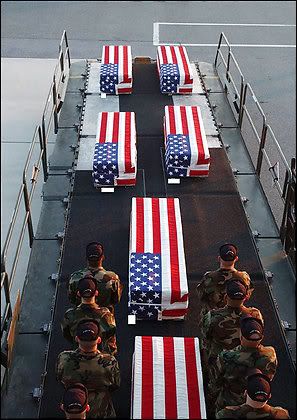(6 pm. – promoted by ek hornbeck)

Framing, as a theoretical concept, emerged from agenda setting–the notion that media coverage does not tell the public what to think, but it does have an effect in telling them what subjects to think about. (3)
Framing took agenda setting beyond audience salience and added that media coverage also indicated how that subject was to be approached by the audience, the acceptable range of terms, connections, and interpretations […]
Framing also has roots in cognitive theories about how the human brain works. (6) It ties into schema theory, the idea that the synapses of our brains do not purely save and store facts. Instead, our brains link related ideas in associative patterns; ideas fitting patterns more easily find room than those with no existing “hook” to hold them.
Ideas need the right frame to have a lasting impact.
A frame must find a common “hook” in order to take up its new residence.

also from previous reference:
The bestselling book Don’t Think of an Elephant!, subtitled Know Your Values and Frame the Debate, detailed some of the word choices with which the George W. Bush Administration subtly shifted public debate. Inheritance or estate taxes were called death taxes. Tax cuts were called tax relief because relief has a very strong positive connotation.
Mark D. Harmon, is an associate professor in the School of Journalism & Electronic Media. College of Communication and Information. University of Tennessee.
Robert Muenchen is at the Statistical Consulting Center. University of Tennessee.
Semantic framing in the build-up to the Iraq War: Fox V. CNN and other U.S. broadcast news programs

Framing your mental images and concepts, so others can “get them”, can range from the innocuous, to the unforgettable; and to many zones, in between.
The right frame can mean all the difference, to communicating your ideas. The wrong frame can end up burying your “truths” … obscuring your causes.

The Choice of Images and the Choice of Language, can frame “the realities” for the audience. They form the Mental Pictures that can end up becoming part of their “world view” too.
Here is a stunning case in point, of such “reality painting” at work:
Remembering Our Shared Past: Visually Framing the Iraq War on U.S. News Websites
Carol B. Schwalbe, Walter Cronkite School of Journalism and Mass Communication, Arizona State University
The Visual Framing of War
Although definitions of framing differ, many share similar characteristics. Broadly speaking, a frame “is a central organizing idea or story line that provides meaning to an unfolding strip of events.
The frame suggests what the controversy is about, the essence of the issue” (Gamson & Modigliani, 1987, p. 143).
More specifically, framing refers to patterns that emerge in the way the media select, organize, emphasize, present, and ignore certain aspects of words and/or images over others (Gitlin, 1980).
[…]

Picturing the Iraq War
During the 1991 Gulf War the pool system, censorship, and military escorts made it difficult for photojournalists to shoot the types of up-close pictures that had helped turn U.S. public opinion against the Vietnam War. A study of 1,104 Gulf War photos in Time, Newsweek, and U.S. News & World Report concluded that “remarkably little of the photo-journalistic coverage … depicts actual combat activity of any kind” (Griffin & Lee, 1995, p. 821).
[…]How did mainstream U.S. news websites visually frame the first five weeks of the [Iraq] war as an ongoing (contemporaneous) event?
Online news images initially focused on the official war machine, then shifted to the perspective of the ordinary person over the next four weeks.
[…]
The five collection times coincided with some of the invasion’s major events: the initial attack (Week 1), the march to Baghdad (Week 2), the rescue of Jessica Lynch (Week 3), the toppling of Saddam’s statue (Week 4), and the assertion of U.S. control (Week 5). The dominant visual frames, in turn, changed from week to week and reflected elements of the master war narrative […]Week 1: Conflict frame
Neuman, Just, and Crigler (1992) found that the most common frame used by the U.S. media was conflict between individuals, groups, or countries.
[…]Week 2: Conquest frame
This study indicates that in the second week of the war, the visual frame had already shifted from shock and awe to the human face.
[…]Week 3: Rescue frame
The human face continued into Week 3 (72.6% of dominant images, 58.4% of secondary images). One individual especially represented the human face of the war-the newly rescued U.S. soldier Jessica Lynch.
[…]Week 4: Victory frame
In the fourth week U.S. forces had secured Baghdad, and victory seemed close at hand.
[…]Week 5: Control frame
By the fifth week of the study, the war appeared to be over, as reflected in the declining number of war images.
http://jcmc.indiana.edu/vol12/…

This time around the Media framed its words and images, so that Americans were “told” what to think about the Iraq War, when; AND HOW to interpret those events, so that they would easily fit into our pre-existing mental landscapes. So that we would hopefully, “accept this ‘just’ war” in a “generally positive” way.
In the 60’s, by contrast, the Media treated Photo-Journalism more like responsible Reporting. They saw their role to communicate the awful truths of war. Back then it was not stage craft — it was raw, it was real. It was visual reporting that left a lasting impact.

I grew up in the 60s — and it seemed to me that the War Protests then were quite over-rated — in so far as bringing the war to an end; (Nixon was re-elected, with the war in tow.)
What ended the Vietnam war, in my opinion — was the TV images of war,
at so many Dinner hours, night after night (and eventually, the “average” American started asking WHY?)
Lesson learned, or so we thought … About the need to NEVER to fight another unjust war — AGAIN!
But the Media, THEY learned a few lessons too.
They learned if you can cancel the images of war, if you can cancel the journalism, if you can stunt its realism — THEN you can cancel the citizen outrage, you can mute their interest. You make the awfulness of war — fade away, for the “average” American.

The Media-makers have learned to frame it in such a way, so that, that same “average” American, now finds the endless state of war(s) — BORING!
Censorship of Media Reporting of U.S. Wars
In Vietnam, where war was never officially declared, the press enjoyed greater freedom from military censorship than it had in previous engagements, such as the Korean War and World War II. In addition, the growth of television reporting in Vietnam made this the first war whose sights and sounds were quickly available in American living rooms.
[…]
By the time of the Persian Gulf War, 24-hour-a-day, real-time coverage had become a reality, yet all reporting was also subject to intensive military censorship. Television played a vital role in shaping Americans’ overwhelmingly enthusiastic response to the Gulf War. But, despite vastly improved means of covering the war, the various media were left with little to report other than exactly what the Allied leaders wanted people to see and hear.Careful management of media access to the war meant that political and military leaders were able to frame the story in their own terms and, in effect, use the new technology for their own ends.
http://www.lotsofessays.com/vi…

But WAR is anything BUT boring — for those unknown souls, caught in its ceaseless crossfire.
But such are the Images we will no longer, see framed in stark relief, at the Dinner hour.
Americans have enough stress these days — just leave us in peace, already!
The Media (and its directors) have trained us well … As a country, we hardly even shrug, anymore.
Such are the Frames that the “average” American, has internalized, along with the endless rationalizations, to keep the world spinning on its axis.

10 comments
Skip to comment form
Author
we have the power
to re-frame it right back.
Did I do it right?
all over the city. You couldn’t ignore the gods.
The PR industry (I inclued the so-called “news” media) does a beautiful job stringing frames together to produce utter meaninglessness. No one can possibly understand anything and the conclusion one comes to on the basis of the those strung together frames (The Narrative). All of it is impossible because nearly all of it is fiction so it does not correlate to reality. That very disjunction between reality and The Narrative makes even more lies just as credible as the ones given previously. Thus, as a culture, we are navigating deeper and deeper into the collective unconscious. It may be easier to read our politics and cultural trends as dreams now. The American Dream indeed!